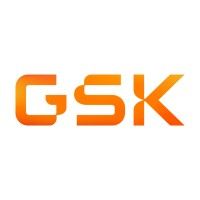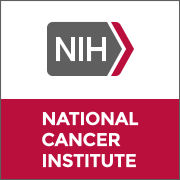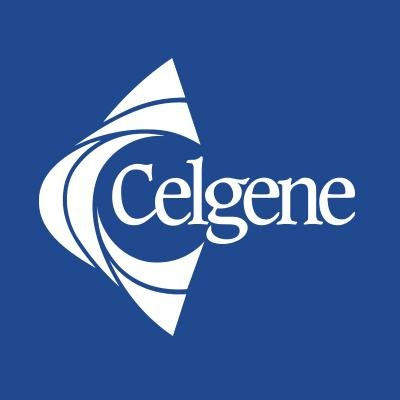预约演示
更新于:2025-09-06
Melphalan
美法仑
更新于:2025-09-06
概要
基本信息
药物类型 小分子化药 |
别名 Alanine nitrogen mustard、CE-melphalan、L-PAM + [13] |
靶点 |
作用方式 抑制剂 |
作用机制 DNA抑制剂(DNA抑制剂) |
非在研适应症 |
原研机构 |
最高研发阶段批准上市 |
最高研发阶段(中国)批准上市 |
特殊审评孤儿药 (美国)、孤儿药 (澳大利亚) |
登录后查看时间轴
结构/序列
分子式C13H18Cl2N2O2 |
InChIKeySGDBTWWWUNNDEQ-LBPRGKRZSA-N |
CAS号148-82-3 |
关联
722
项与 美法仑 相关的临床试验NCT06996119
Pilot Study of Emapalumab With Post-Transplant Cyclophosphamide as Graft-Versus-Host Disease Prophylaxis for Reduced-Intensity Allogeneic Hematopoietic Cell Transplantation
This phase I trial tests the safety, side effects and effectiveness of emapalumab with post-transplant cyclophosphamide, tacrolimus, and mycophenolate mofetil in preventing graft-versus-host disease (GVHD) in patients with acute myeloid leukemia (AML) or myelodysplastic syndrome (MDS) after reduced-intensity donor (allogeneic) hematopoietic cell transplant (HCT). Giving chemotherapy, such as fludarabine, melphalan, or busulfan, before a donor [peripheral blood stem cell] transplant helps kill cancer cells in the body and helps make room in the patient's bone marrow for new blood-forming cells (stem cells) to grow. When healthy stem cells for a donor are infused into a patient (allogeneic HCT), they may help the patient's bone marrow make more healthy cells and platelets. Allogeneic HCT is an established treatment, however, GVHD continues to be a major problem of allogeneic HCT that can complicate therapy. GVHD is a disease caused when cells from a donated stem cell graft attack the normal tissue of the transplant patient. Emapalumab binds to an immune system protein called interferon gamma. This may help lower the body's immune response and reduce inflammation. Cyclophosphamide is in a class of medications called alkylating agents. It works by damaging the cell's deoxyribonucleic acid and may kill cancer cells. It may also lower the body's immune response. Tacrolimus is a drug used to help reduce the risk of rejection by the body of organ and bone marrow transplants. Mycophenolate mofetil is a drug used to prevent GVHD after organ transplants. It is also being studied in the prevention of GVHD after stem cell transplants for cancer, and in the treatment of some autoimmune disorders. Mycophenolate mofetil is a type of immunosuppressive agent. Giving emapalumab with post-transplant cyclophosphamide, tacrolimus and mycophenolate mofetil may be safe, tolerable and/or effective in preventing GVHD in patients with AML or MDS after a reduced-intensity allogeneic HCT.
开始日期2026-05-25 |
申办/合作机构 |
NCT07052370
TCRαβ-depleted Progenitor Cell Graft With Early Memory T-cell DLI, Plus Selected Use of Blinatumomab, in naïve T-cell Depleted Haploidentical Donor Hematopoietic Cell Transplantation for Hematologic Malignancies
This is a phase I, prospective clinical trial studying the safety and feasibility of providing early memory T-cell DLI.
The primary objective is:
- To assess the safety and feasibility of early CD45RA-depleted DLI administration.
The secondary objectives are
* To assess the safety and feasibility of the addition of blinatumomab in the early post-transplant period in patients with CD19+ malignancy.
* To measure and describe the pharmacokinetics of rabbit ATG in HCT recipients on this study.
The primary objective is:
- To assess the safety and feasibility of early CD45RA-depleted DLI administration.
The secondary objectives are
* To assess the safety and feasibility of the addition of blinatumomab in the early post-transplant period in patients with CD19+ malignancy.
* To measure and describe the pharmacokinetics of rabbit ATG in HCT recipients on this study.
开始日期2025-12-01 |
NCT06954987
A Two Cohort, Randomized, Double-Blind, Placebo-Controlled, Phase II Multi-Center Signal-Finding Study of Venetoclax Combined With Reduced-Intensity Conditioning Followed by Allogeneic Hematopoietic Cell Transplantation Then Venetoclax Maintenance in Adult Patients With Acute Myeloid Leukemia in First Complete Remission: A MyeloMATCH Sub-Study
This phase II MyeloMATCH treatment trial compares the effect of adding venetoclax or placebo to reduced intensity conditioning chemotherapy with fludarabine and busulfan or melphalan, with or without total body irradiation, followed by hematopoietic stem cell transplant and either venetoclax or placebo maintenance therapy after transplant, for the treatment of patients with acute myeloid leukemia (AML). Venetoclax is in a class of medications called B-cell lymphoma-2 (BCL-2) inhibitors. It may stop the growth of cancer cells by blocking Bcl-2, a protein needed for cancer cell survival. Giving chemotherapy and total body irradiation before a donor stem cell transplant helps kill cancer cells in the body and helps make room in the patient's bone marrow for new blood-forming cells (stem cells) to grow. When the healthy stem cells from a donor are infused into a patient, they may help the patient's bone marrow make more healthy cells and platelets and may help destroy any remaining cancer cells. Adding venetoclax to conditioning therapy before, and giving it as maintenance therapy after, a hematopoietic stem cell transplant may be a more effective treatment option than the usual approach in patients with AML.
开始日期2025-09-18 |
申办/合作机构 |
100 项与 美法仑 相关的临床结果
登录后查看更多信息
100 项与 美法仑 相关的转化医学
登录后查看更多信息
100 项与 美法仑 相关的专利(医药)
登录后查看更多信息
11,795
项与 美法仑 相关的文献(医药)2025-12-01·CANCER CHEMOTHERAPY AND PHARMACOLOGY
Lipidomic profiling of plasma from patients with multiple myeloma receiving bortezomib: an exploratory biomarker study of JCOG1105 (JCOG1105A1)
Article
作者: Suzuki, Yasuhiro ; Tabayashi, Takayuki ; Maruta, Masaki ; Kuroda, Junya ; Saito, Yoshiro ; Harada, Yasuhiko ; Katsuya, Hiroo ; Iida, Shinsuke ; Takayama, Nobuyuki ; Yoshida, Shinichiro ; Mizuno, Ishikazu ; Norifumi, Tsukamoto ; Negoro, Eiju ; Yoshida, Isao ; Minami, Yosuke ; Miyazaki, Kana ; Maruyama, Dai ; Asano, Arisa ; Takamatsu, Yasushi ; Ohtsuka, Eiichi ; Munakata, Wataru ; Yoshimitsu, Makoto ; Tsujimura, Hideki ; Nagai, Hirokazu ; Fukuhara, Suguru ; Kanato, Keisuke ; Fukuhara, Noriko ; Ri, Masaki ; Ota, Shuichi ; Saito, Kosuke ; Saito, Toko
PURPOSE:
A comprehensive analysis of metabolites (metabolomics) has been proposed as a new strategy for analyzing liquid biopsies and has been applied to identify biomarkers predicting clinical responses or adverse events associated with specific treatments. Here, we aimed to identify metabolites associated with bortezomib (Btz)-related toxicities and response to treatment in newly diagnosed multiple myeloma (MM).
METHODS:
Fifty-four plasma samples from transplant-ineligible MM patients enrolled in a randomized phase II study comparing two less-intensive regimens of melphalan, prednisolone and Btz (MPB) were subjected to the lipidomic profiling analysis. The amount of each lipid metabolite in plasma obtained prior to MPB therapy was compared to toxicity grades and responses to MPB therapy.
RESULTS:
High levels of 7 phospholipids (4 lysophosphatidylcholines and 3 phosphatidylcholines) were observed in cases with Btz-induced ≥ grade 2 peripheral neuropathy (BiPN) (n = 11). In addition, low levels of 3 fatty acids (FAs)-FA (18:2), FA (18:1), and FA (22:6)-were observed in patients who developed severe skin disorders ≥ grade 2 (n = 10). No metabolite significantly associated with treatment response was identified.
CONCLUSION:
We conclude that levels of specific plasma lipid metabolites are associated with the severity of BiPN and skin disorders in patients with MM. These metabolites may serve as candidate biomarkers to predict Btz-induced toxicity in patients with MM before initiating Btz-containing therapy.
2025-12-01·JOURNAL OF CLINICAL IMMUNOLOGY
Successful Allogeneic Hematopoietic Cell Transplantation for Patients with IL10RA Deficiency in Japan
Article
作者: Ishige, Takashi ; Sasahara, Yoji ; Goto, Kimitoshi ; Tomomasa, Dan ; Wada, Taizo ; Ito, Yoshiya ; Matsuda, Yusuke ; Kato, Motohiro ; Kudo, Takahiro ; Hagiwara, Shin-Ichiro ; Kanegane, Hirokazu ; Morio, Tomohiro ; Takeuchi, Ichiro ; Arai, Katsuhiro ; Uhlig, Holm H ; Ishimura, Masataka ; Suzuki, Tasuku ; Keino, Dai ; Saida, Satoshi ; Eguchi, Katsuhide
BACKGROUND:
IL10RA (IL10 receptor subunit alpha) deficiency is an autosomal recessive disease that causes inflammatory bowel disease during early infancy. Its clinical course is often fatal and the only curative treatment is allogeneic hematopoietic cell transplantation (HCT). In Japan, only case reports are available, and there are no comprehensive reports of treatment outcomes.
METHODS:
We retrospectively analyzed patients with IL10RA deficiency in Japan.
RESULTS:
Two newly identified and five previously reported patients were included in this study. Five patients underwent HCT; one untransplanted patient survived to age 14, and one died of influenza encephalopathy before transplantation. All five HCT recipients underwent HCT at the age before 2 years. They all were conditioned with fludarabine/busulfan- or fludarabine /melphalan-based regimens. The donor source was human leukocyte antigen haploidentical donor bone marrow (BM) for two patients and unrelated umbilical cord blood (CB) for two patients. One patient experienced graft failure with unrelated CB and required a second transplant with unrelated BM. All patients who underwent HCT survived and demonstrated an improved performance status.
CONCLUSION:
In cases of IL10RA deficiency, the need for transplantation should be promptly assessed, and early transplantation should be considered. (190/250).
2025-11-01·BIOMATERIALS
ROS-catalytic self-amplifying benzothiophenazine-based photosensitive conjugates for photodynamic-immuno therapy
Article
作者: Tan, Zongwen ; Zhu, Weirui ; Wang, Xiaoying ; Dai, Wei ; Zhang, Tao ; Zhang, LeiLei
Activatable photosensitizer (aPS)-mediated photodynamic therapy (PDT) holds great potential towards precision cancer treatment, but which generally suffers from low therapeutic outcomes due to the low activation efficiency of aPS and the low phototherapeutic effect of single PDT. In this study, we present a newly aPS designing strategy based on benzothiophenazine (BP) for fabrication of the robust small-molecule photosensitizer conjugates (SMPCs). Specifically, after systematically studying the photosensitizing mechanism of BP, a fully caged pro-photosensitizing platform (BP-Cl) was established, based on which we can introduced various amine molecules to create a series of reactive oxygen species (ROS)-catalytic self-amplifying SMPCs. As a proof of concept, we synthesized a SMPC (BP-Mel) by employing the chemotherapeutic melphalan to BP-Cl. Upon triggered by endogenous ROS, BP-Mel can achieve self-amplified activation under infrared illumination to efficiently produce the active BP for type I PDT, and along with the release of melphalan to induce immunogenic cell death in breast cancer cells. BP-Mel was encapsulated with resiquimod (R848) to form the nanoagonist (BMR), where BP-Mel induces localized tumor damage and immunogenic cell death and the TLR7/8 agonist R848 potently stimulates dendritic cell maturation and enhances tumor-specific T cell responses. BMR-mediated combination therapy induces powerful tumor suppression and immunotherapeutic cascade in EMT6-tumor-bearing mice. This study presents a scalable strategy for the customization of activatable photosensitive conjugates, exemplifying precise and efficient PDT.
300
项与 美法仑 相关的新闻(医药)2025-08-04
撰文 | 章台柳
体细胞DNA突变的获得是衰老的一个标志,并且会导致各种与年龄相关的人类疾病(包括癌症)的发生发展。在造血干细胞(HSCs)中,突变的获得随时间呈现出显著的线性轨迹,每个造血干细胞每年大约获得16-25个突变。某些体细胞突变会增强细胞适应性,促使其作为驱动突变被选择。这会导致携带这些驱动突变的细胞发生克隆性扩增,即所谓的克隆性造血(CH)。克隆性造血的发展会导致造血干细胞中克隆多样性随年龄而下降,并最终促进血液系统恶性肿瘤的发生。
外部应激源或致癌物可调节人体组织的突变率和细胞动态。诸如紫外线(UV)、吸烟和饮酒等因素会增加皮肤、肺和食管等组织的体细胞突变。此外,这些外在因素会改变细胞生态系统的适应性,使得具有适应性优势突变的细胞得以扩增。造血系统也会暴露于各种外部应激源,包括细胞毒性化疗,在极少数情况下,可能会导致治疗相关髓系肿瘤(t-MNs)的发生。对接受化疗的癌症患者进行DNA测序显示,与普通人群相比,其CH突变谱具有独特性,DNA损伤反应(DDR)通路基因突变富集,包括TP53、PPM1D和CHEK2。在动物模型中,破坏DNA的化疗已被证明可促进具有TP53和PPM1D突变的HSCs选择性扩增。尽管研究揭示了化疗与特定驱动突变克隆扩增之间的联系,但化疗如何影响群体动态以及单个个体造血干细胞基因组仍不清楚。此外,这些影响如何导致治疗诱导的恶性肿瘤也不清楚。
近日,美国得克萨斯大学安德森癌症中心的Koichi Takahashi团队在NatureGenetics杂志上发表文章Clonal evolution of hematopoietic stem cells after autologous stem cell transplantation,对来自10名接受化疗的多发性骨髓瘤患者和6名正常供体的1276个造血干/祖细胞(HSPC)形成的单细胞集落进行全基因组测序。结果显示,美法仑治疗显著增加突变负荷,产生了独特的突变特征,而其他化疗药物的影响极小。治疗后HSPC的克隆多样性和结构与正常老年个体中观察到的相似,这表明化疗加速了克隆衰老。对匹配的治疗相关髓系肿瘤样本进行综合系统发育分析,将其克隆起源追溯到多个竞争克隆中的单个HSPC克隆,支持寡克隆向单克隆转化的模型。这些发现强调了有必要对癌症化疗的长期血液学后果开展进一步系统研究。
为了研究化疗对造血干/祖细胞(HSPC)基因组的影响,研究人员收集了10名接受过诱导化疗的多发性骨髓瘤(MM)患者以及6名无化疗史正常供体来源的外周血干细胞,在半固体甲基纤维素培养基中培养,以生成单细胞来源的集落。对这些集落的基因组DNA进行全基因组测序。之前研究显示,正常HSPC的突变率随时间呈线性变化,每个HSPC每年约获得16-25个单核苷酸变异(SNVs)。正常供体外周血干细胞(PBSCs)也显示出每年17.2个的突变率,与之前结论相一致。随后,研究人员绘制了经化疗处理的HSPC中的体细胞单核苷酸变异数量。结果显示,经美法仑治疗的HSPC其体细胞SNVs突变增加,且提取出治疗相关特征;而其他化疗药物如环磷酰胺则未增加突变。这种差异可能是由于HSPC通过醛脱氢酶将环磷酰胺代谢为无活性形式,从而避免 DNA 损伤,而美法仑会直接在造血干细胞中形成 DNA 加合物。这表明化疗对造血干细胞基因组的影响具有多样性。
利用单个集落的共有及独特SNVs,为治疗后HSPCs和正常对照构建系统发育树。用已知的血液系统驱动突变或拷贝数异常(CNAs)对所得系统发育树进行注释,以阐明扩增的分支与这些驱动突变的关联。之前的研究显示正常个体中,70岁以后HSPCs的克隆多样性会下降。与年龄匹配的对照相比,治疗后HSPCs表现出明显的寡克隆性。尽管队列中患者的年龄为46-65岁,但部分样本显示出显著更低的均匀度指数,与年龄在75岁以上的正常个体相当。比较接受传统细胞毒性化疗(美法仑、环磷酰胺、阿霉素和长春新碱治疗的样本)和非细胞毒性治疗(来那度胺、沙利度胺和硼替佐米治疗的样本)的患者之间的均匀度指数时,接受细胞毒性化疗患者的HSPCs均匀度低于接受非细胞毒性治疗的患者。基于Moran模型对HSPCs动力学进行随机模拟,结果显示:在没有化疗的情况下,驱动突变会导致在生命的第7个十年左右多样性指数下降;细胞毒性化疗的引入,会导致克隆多样性立即且持续地丧失。在出现化疗耐药突变(如TP53和PPM1D突变)的情况下,克隆多样性的减少会加剧,观察到的变异范围更广。即细胞毒性化疗会加速HSPCs克隆多样性的丧失,且其影响在治疗期结束后仍会长期存在。
治疗后HSPCs中,大多数扩增的克隆分支都携带驱动突变(57个分支中有30个,占53%),而正常个体中57个分支中有10个(占17%)。DNA损伤响应(DDR)通路突变(TP53和PPM1D)的趋同进化在接受治疗的HSPCs中普遍存在,即化疗对携带DDR通路突变的克隆产生了强烈的选择压力。比较克隆分支的突变率,一些携带TP53突变和PPM1D突变的克隆分支显示出比野生型集落显著更高的突变率,但并非所有携带驱动突变的克隆分支都普遍观察到这种情况。而且,某些未检测到驱动突变的克隆分支也出现突变率升高。进一步观察到,HSPCs集落中突变率(总体突变率以及CpG位点的C>T变化)与端粒长度呈负相关,表明某些突变细胞中突变率的升高更可能归因于克隆扩增加速,而非驱动突变本身的直接结果。但这并不能排除突变率升高可能通过获得赋予选择性优势来驱动细胞增殖的可能性。
在当前队列中,10名患者中有9名在采集外周血干细胞(PBSCs)后,中位时间为3年(范围1-8年)发展为治疗相关髓系肿瘤(t-MNs)。在t-MN确诊时从骨髓样本中获取大量 DNA,并进行全基因组测序。将HSPC集落和t-MN基因组进行系统发育分析,通过集落和t-MN基因组之间共有变异,能够识别出t-MN的最近共同祖先。分析显示,自体干细胞移植(ASCT)后t-MN存在以下两种不同的发展路径:大多数t-MN源自外周血干细胞(PBSCs)中的克隆,少数可能源自未动员且经历了预处理治疗的骨髓造血干/祖细胞。这需要更大队列进行验证。
总的来说,这项研究探究了化疗对正常造血干细胞基因组及群体动态的影响,并阐明了由正常造血干细胞发展为治疗相关髓系肿瘤的演化历程。
原文链接:
https://www-nature-com.libproxy1.nus.edu.sg/articles/s41588-025-02235-w
制版人: 十一
学术合作组织
(*排名不分先后)
战略合作伙伴
(*排名不分先后)
·
转载须知
【原创文章】BioArt原创文章,欢迎个人转发分享,未经允许禁止转载,所刊登的所有作品的著作权均为BioArt所拥有。BioArt保留所有法定权利,违者必究。
BioArt
Med
Plants
人才招聘
近期直播推荐
点击主页推荐活动
关注更多最新活动!
2025-07-30
致力于眼科疗法的研发、生产及商业化,以满足巨大医疗需求缺口的领先眼科制药企业兆科眼科有限公司(“兆科眼科”或“本公司”; 香港联交所股份代号:6622)欣然宣布,本公司拥有专利配方、用于治疗儿童视网膜母细胞瘤(“RB”,一种罕见的儿童眼癌)的药物美法仑,已获美国食品药品监督管理局(“FDA”)授予孤儿药资格认证(Orphan Drug Designation,“ODD”)。 FDA授予的资格认证反映了美法仑在解决重大未满足医疗需求方面的潜力。美法仑是一种烷化剂类化疗药物,通过化学修饰肿瘤细胞DNA链,以发挥其抗癌作用。该过程形成的交联结构可破坏DNA复制与转录功能,针对性杀灭快速分裂的癌细胞。在RB治疗中,其局部给药特性更具临床优势。 取得孤儿药资格认证将为兆科眼科带来显著的战略优势。它为兆科眼科在美国提交新药临床试验申请(“IND”)建立了清晰的路径。尤为重要的是,如果美法仑成功研发并获得监管批准,兆科眼科将在新药申请(“NDA”)批准后享有七年美国市场独占权。此项保护涵盖上市许可持有人 (Marketing Authorization Holder,“MAH”)地位和数据独占权利;更关键的是,在此期间,无论制剂技术如何创新,FDA将不会批准任何其他美法仑RB适应症产品。目前市场尚无同适应症产品上市,兆科眼科将继续致力于推动美法仑的研发,以保持其潜在先发优势。 兆科眼科董事会主席、执行董事兼行政总裁李小羿博士(Dr. Benjamin Li)表示:“我们非常高兴兆科的儿童视网膜母细胞瘤药物取得FDA孤儿药资格认证。这项成就是我们进入美国市场计划的又一重要里程碑。美国的《孤儿药法案》有望赋予的七年市场独占权利,不仅为我们提供强大的竞争优势,更坚定我们对此突破性疗法研发与商业化的投入。这项认证使我们更接近使命:为受此罕见眼癌困扰的儿童及家庭带来希望。”关于美法仑美法仑是一种烷化剂类抗肿瘤药物,通过与DNA作用并干扰DNA复制和细胞分裂,阻断癌细胞生长扩散。现行临床应用主要作为多发性骨髓瘤患者自体造血干细胞移植前的预处理治疗,或口服疗法不适用的多发性骨髓瘤的姑息治疗等。关于儿童视网膜母细胞瘤儿童视网膜母细胞瘤是一种罕见的眼癌,主要影响五岁以下儿童。在美国,每年约有200至300例确诊病例(美国癌症协会,2023年)。于全球范围内,每15,000至18,000例活产婴儿中约有1例患有该病,导致每年约有8,000至9,000例新发病例(世界卫生组织,2024年)。如果及时诊断并接受适当的治疗,全球范围内的整体存活率可超过90%。
孤儿药临床申请快速通道
2025-07-24
Landmark approval is based on results from the Phase 3 AQUILA study, showing fixed-duration treatment with daratumumab significantly reduced the risk of progression to active multiple myeloma or death by 51 percent compared to active monitoring
1
This milestone marks a critical advance in early intervention for multiple myeloma as the first authorised treatment, offering a new treatment paradigm for patients with high-risk smouldering disease
2
BEERSE, Belgium I July 23, 2025 I
Janssen-Cilag International NV, a Johnson & Johnson company, today announced that the European Commission (EC) has approved a new indication for DARZALEX
®
(daratumumab) subcutaneous (SC) formulation as monotherapy for the treatment of adult patients with smouldering multiple myeloma (SMM) at high-risk of developing multiple myeloma.
3
SMM is an asymptomatic intermediate disease state of multiple myeloma where abnormal cells can be detected in the bone marrow.
2,4,5
“Until now, the absence of approved therapies for high-risk smouldering multiple myeloma has left clinicians with limited options beyond observation, despite evidence that 50 percent of this patient population progress to active multiple myeloma within two years,” said Professor Meletios A. Dimopoulos, M.D., National and Kapodistrian University of Athens School of Medicine.* “The approval of daratumumab offers the potential to change this trajectory. By intervening earlier in the disease course, we have a meaningful opportunity to delay or prevent progression to symptomatic disease, reduce irreversible end-organ damage and extend the window of improved patient outcomes.”
“This new indication for daratumumab SC is an exciting step forward in addressing a long-standing unmet clinical need for those diagnosed with high-risk smouldering multiple myeloma and is the first time a treatment has been approved for this patient population,” said Ester in ’t Groen, EMEA Therapeutic Area Head Haematology, Johnson & Johnson Innovative Medicine. “It means that eligible patients no longer have to live with the uncertainty or fear of waiting for progression to occur without active treatment, instead having the option to intercept the disease with therapeutic intervention.”
The Phase 3 AQUILA study (
NCT03301220
) is the largest randomised study of a well-defined high-risk SMM population, evaluating the efficacy and safety of fixed-duration, monotherapy daratumumab SC (n=194) compared with active monitoring (n=196).
1
At a median follow-up of 65.2 months (range, 0-76.6), patients who received daratumumab SC showed statistically significant improved progression-free survival (PFS; defined as progression to active multiple myeloma, as assessed according to the International Myeloma Working Group diagnostic criteria for multiple myeloma [SLiM-CRAB], or death) compared to patients who underwent active monitoring; 63.1 percent in the daratumumab arm versus 40.8 percent in the active monitoring arm remained alive and progression-free at 60 months (hazard ratio [HR], 0.49; 95 percent confidence interval [CI], 0.36-0.67;
p
<0.001).
1
Among patients who were retrospectively categorised as having high-risk SMM, per the current Mayo 2018 criteria (20/2/20), median PFS was not reached in the daratumumab arm and was 22.1 months in the active monitoring arm (HR, 0.36; 95 percent CI, 0.23-0.58).
1
Overall survival was also extended with daratumumab SC, with 5-year survival rates of 93.0 percent vs 86.9 percent for active monitoring (HR, 0.52; 95 percent CI, 0.27-0.98).
1
Additionally, patients who received daratumumab SC saw a higher overall response rate of 63.4 percent compared to 2.0 percent with active monitoring (
p
<0.001).
1
Median time to first-line multiple myeloma treatment was not reached for patients receiving daratumumab SC compared to 50.2 months with active monitoring (HR, 0.46; 95 percent CI, 0.33-0.62; nominal
p
<0.0001).
1,6
Daratumumab demonstrated a safety profile consistent with previous studies of daratumumab in other indications, with a low rate of treatment discontinuation due to treatment-emergent adverse events (TEAEs).
1
Grade 3/4 TEAEs occurred in 40.4 percent of patients treated with daratumumab SC and 30.1 percent of patients actively monitored.
1
The most common (≥5 percent in either group) Grade 3/4 TEAE was hypertension (5.7 percent vs 4.6 percent, respectively).
1
The frequency of TEAEs leading to discontinuation of daratumumab SC was low (5.7 percent), as was the incidence of fatal TEAEs in both groups (1.0 percent vs 2.0 percent, respectively).
1
“Until now, there have been no approved treatment options for patients diagnosed with high-risk smouldering multiple myeloma,” said Jordan Schecter, M.D., Vice President, Disease Area Leader, Multiple Myeloma, Johnson & Johnson Innovative Medicine. “With today’s approval, Johnson & Johnson has an innovative therapy for every stage of the disease. We can now offer physicians and patients the option to treat with daratumumab earlier, significantly delaying progression and the need for more intensive, continuous therapy, as well as extending overall survival. We remain steadfast in our mission to get in front of cancer.”
About the AQUILA Study
AQUILA (
NCT03301220
) is a randomised, multicentre Phase 3 study investigating daratumumab SC versus active monitoring in patients (n=390) with high-risk smouldering multiple myeloma (SMM).
7
The primary endpoint is progression-free survival and secondary endpoints include time to progression, overall response rate and overall survival.
7
Patients in the study were diagnosed with SMM in the last five years and were excluded if they had prior exposure to approved or investigational treatments for SMM or multiple myeloma.
7
About Smouldering Multiple Myeloma
SMM is an asymptomatic intermediate disease state of multiple myeloma where abnormal cells can be detected in the bone marrow.
2,8
Patients living with SMM tend not to show signs or symptoms typically associated with active myeloma, such as bone pain, bone fractures, kidney problems, or anaemia, however as abnormal plasma cells are present, organ damage may begin and progress asymptomatically.
1,9
Approximately 15 percent of all cases of newly diagnosed multiple myeloma are classified as SMM, and half of those diagnosed with high-risk SMM are estimated to progress to active multiple myeloma within two years.
10
About Multiple Myeloma
Multiple myeloma is currently an incurable blood cancer that affects a type of white blood cell called plasma cells, which are found in the bone marrow.
11,12
In multiple myeloma, these malignant plasma cells continue to proliferate, accumulating in the body and crowding out normal blood cells, as well as often causing bone destruction and other serious complications.
11,12
In the European Union, it is estimated that more than 35,000 people were diagnosed with multiple myeloma in 2022, and more than 22,700 patients died.
13
Patients living with multiple myeloma experience relapses which become more frequent with each line of therapy while remissions become progressively shorter.
14,15,16
Whilst some patients with multiple myeloma initially have no symptoms, others can have common signs and symptoms of the disease, which can include bone fracture or pain, low red blood cell counts, fatigue, high calcium levels, infections, or kidney damage.
17
About Daratumumab and Daratumumab SC
Johnson & Johnson is committed to exploring the potential of daratumumab for patients with multiple myeloma across the spectrum of the disease.
In
August 2012
, Janssen Biotech, Inc., a Johnson & Johnson company, and Genmab A/S entered a worldwide agreement, which granted Johnson & Johnson an exclusive licence to develop, manufacture and commercialise daratumumab. Since launch, daratumumab has become a foundational therapy in the treatment of multiple myeloma, having been used in the treatment of more than 618,000 patients worldwide.
18
Daratumumab is the only CD38-directed antibody approved to be given subcutaneously to treat patients with multiple myeloma.
19
Daratumumab SC is co-formulated with recombinant human hyaluronidase PH20 (rHuPH20), Halozyme’s ENHANZE
®
drug delivery technology.
19
CD38 is a surface protein that is present in high numbers on multiple myeloma cells, regardless of the stage of disease.
19
Daratumumab binds to CD38 and inhibits tumour cell growth causing myeloma cell death.
19
Daratumumab may also have an effect on normal cells.
19
Data across ten Phase 3 clinical trials, in both the frontline and relapsed settings, have shown that daratumumab-based regimens resulted in significant improvement in progression-free survival and/or overall survival.
20,21,22,23,24,25,26,27,28
For further information on daratumumab, please see the Summary of Product Characteristics at:
https://ec.europa.eu/health/documents/community-register/html/h1101.htm
.
About Johnson & Johnson
At Johnson & Johnson, we believe health is everything. Our strength in healthcare innovation empowers us to build a world where complex diseases are prevented, treated, and cured, where treatments are smarter and less invasive, and solutions are personal. Through our expertise in Innovative Medicine and MedTech, we are uniquely positioned to innovate across the full spectrum of healthcare solutions today to deliver the breakthroughs of tomorrow. and profoundly impact health for humanity.
Learn more at
www.innovativemedicine.jnj.com/emea
. Follow us at
www.linkedin.com/company/jnj-innovative-medicine-emea
. Janssen-Cilag International NV, Janssen Pharmaceutica NV, Janssen-Cilag Limited, Janssen Biotech, Inc. and Janssen Research & Development, LLC are Johnson & Johnson companies.
*Professor Meletios A. Dimopoulos, M.D., National and Kapodistrian University of Athens School of Medicine, has provided consulting, advisory, and speaking services to Johnson & Johnson; he has not been paid for any media work.
1
Dimopoulos MA, et al. Phase 3 Randomized Study of Daratumumab Monotherapy versus Active Monitoring in Patients with High-risk Smoldering Multiple Myeloma: Primary Results of the AQUILA study. Oral presentation. American Society of Hematology (ASH) Annual Meeting; December 7-10, 2024.
2
Myeloma UK. Smouldering Myeloma. Available at:
https://www.myeloma.org.uk/wp-content/uploads/2023/04/Myeloma-UK-Smouldering-Myeloma-Infosheet.pdf
. Last accessed: July 2025.
3
European Medicines Agency. DARZALEX (daratumumab) Summary of Product Characteristics. July 2025.
4
Oben B, et al. Whole-Genome Sequencing Reveals Progressive Versus Stable Myeloma Precursor Conditions as Two Distinct Entities. Nature Communications. 2021; 12(1861).
5
Maura F, et al. Targeting the Tumor and The Immune System in Smoldering Multiple Myeloma. The New England Journal of Medicine. 2025;392:1858-1860.
6
Dimopoulos MA, et al. Phase 3 Randomized Study of Daratumumab Monotherapy Versus Active Monitoring in Patients With High-risk Smoldering Multiple Myeloma: Primary Results of the AQUILA Study. Abstract #773. American Society of Hematology (ASH) Annual Meeting; December 7-10, 2024.
7
ClinicalTrials.Gov. A Study of Subcutaneous Daratumumab Versus Active Monitoring in Participants With High-Risk Smoldering Multiple Myeloma. Available at:
https://clinicaltrials.gov/study/NCT03301220
. Last accessed: July 2025.
8
WebMD. Smoldering Multiple Myeloma. Available at:
https://www.webmd.com/cancer/multiple-myeloma/smoldering-multiple-myeloma
. Last accessed: July 2025
9
American Cancer Society. About Multiple Myeloma. Available at:
https://www.cancer.org/cancer/types/multiple-myeloma/about/what-is-multiple-myeloma.html
. Last accessed: July 2025.
10
Rajkumar SV, et al. Smoldering Multiple Myeloma Current Treatment Algorithms. Blood Cancer J. 2022;12(9):129.
11
Abdi J, et al. Drug Resistance in Multiple Myeloma: Latest Findings on Molecular Mechanisms. Oncotarget. 2013;4(12):2186-2207.
12
American Society of Clinical Oncology. Multiple Myeloma: Introduction. Available at:
https://www.cancer.org/cancer/types/multiple-myeloma/if-you-have-multiple-myeloma
. Last accessed: July 2025.
13
ECIS – European Cancer Information System. Estimates of Cancer Incidence and Mortality in 2022, by Country. Multiple Myeloma. Available at:
https://ecis.jrc.ec.europa.eu/explorer.php?$0-0$1-All$2-All$4-1,2$3-51$6-0,85$5-2022,2022$7-7$CEstByCountry$X0_8-3$X0_19-AE27$X0_20-No$CEstBySexByCountry$X1_8-3$X1_19-AE27$X1_-1-1$CEstByIndiByCountry$X2_8-3$X2_19-AE27$X2_20-No$CEstRelative$X3_8-3$X3_9-AE27$X3_19-AE27$CEstByCountryTable$X4_19-AE27
. Last accessed: July 2025.
14
Bhatt P, et al. Relapsed/Refractory Multiple Myeloma: A Review of Available Therapies and Clinical Scenarios Encountered in Myeloma Relapse. Curr Oncol. 2023;30(2):2322-2347.
15
Hernández-Rivas JÁ, et al. The Changing Landscape of Relapsed and/or Refractory Multiple Myeloma (MM): Fundamentals and Controversies. Biomark Res. 2022;10(1):1-23.
16
Gavriatopoulou M, et al. Metabolic Disorders in Multiple Myeloma. Int J Mol Sci. 2021;22(21):11430.
17
American Cancer Society. Multiple Myeloma: Early Detection, Diagnosis and Staging. Available at:
https://www.cancer.org/content/dam/CRC/PDF/Public/8740.00.pdf.
Last accessed: July 2025.
18
J&J Data on File (RF-452129). Number of Patients Treated with DARZALEX Worldwide as of December 2024.
19
Janssen EMEA. European Commission Grants Marketing Authorisation for DARZALEX
®
(Daratumumab) Subcutaneous Formulation for All Currently Approved Daratumumab Intravenous Formulation Indications. Available at:
http://www.businesswire.com/news/home/20200604005487/en/European-Commission-GrantsMarketingAuthorisation-for-DARZALEX%C2%AE%E2%96%BC-daratumumab-SubcutaneousFormulation-for-all-CurrentlyApproved-Daratumumab-Intravenous-Formulation-Indications
. Last accessed: July 2025.
20
Moreau P, et al. Bortezomib, Thalidomide, and Dexamethasone With or Without Daratumumab Before and After Autologous Stem-Cell Transplantation for Newly Diagnosed Multiple Myeloma (CASSIOPEIA): A Randomised, Open-label, Phase 3 Study. Lancet. 2019;394(10192):29-38.
21
Facon T, et al. MAIA Trial Investigators. Daratumumab Plus Lenalidomide and Dexamethasone for Untreated Myeloma. New England Journal of Medicine. 2019;380(22):2104-2115.
22
Mateos MV, et al. Overall Survival with Daratumumab, Bortezomib, Melphalan, and Prednisone in Newly Diagnosed Multiple Myeloma (ALCYONE): A Randomised, Open-label, Phase 3 Trial. The Lancet. 2020;395:132-141.
23
Dimopoulos MA, et al. APOLLO Trial Investigators. Daratumumab Plus Pomalidomide and Dexamethasone Versus Pomalidomide and Dexamethasone Alone in Previously Treated Multiple Myeloma (APOLLO): An Open-label, Randomised, Phase 3 Trial. Lancet Oncol. 2021;22(6):801-812.
24
Palladini G, et al. Daratumumab Plus CyBorD for Patients with Newly Diagnosed AL Amyloidosis: Safety Run-in Results of ANDROMEDA. Blood 2020;2;136(1):71-80.
25
Chari A, et al. Daratumumab Plus Pomalidomide and Dexamethasone in Relapsed and/or Refractory Multiple Myeloma. Blood. 2017;130(8):974-981.
26
Bahlis NJ, et al. Daratumumab Plus Lenalidomide and Dexamethasone in Relapsed/Refractory Multiple Myeloma: Extended Follow-up of POLLUX, A Randomized, Open-label, Phase 3 study. Leukemia. 2020;34(7):1875-1884.
27
Mateos MV, et al. Daratumumab, Bortezomib, and Dexamethasone Versus Bortezomib and Dexamethasone in Patients with Previously Treated Multiple Myeloma: Three-Year Follow-up of CASTOR. Clin Lymphoma Myeloma Leuk. 2020;20(8):509-518.
28
Usmani S Z, et al. Daratumumab + Bortezomib/Lenalidomide/Dexamethasone in Patients with Transplant-Ineligible or Transplant-Deferred Newly Diagnosed Multiple Myeloma: Results of the Phase 3 CEPHEUS Study. Oral Presentation. 21
st
International Myeloma Society (IMS) Annual Meeting. September 25 – 28, 2024.
SOURCE:
Johnson & Johnson
临床结果临床3期上市批准引进/卖出ASH会议
100 项与 美法仑 相关的药物交易
登录后查看更多信息
研发状态
批准上市
10 条最早获批的记录, 后查看更多信息
登录
| 适应症 | 国家/地区 | 公司 | 日期 |
|---|---|---|---|
| 白血病 | 日本 | 2001-04-04 | |
| 淋巴瘤 | 日本 | 2001-04-04 | |
| 实体瘤 | 日本 | 2001-04-04 | |
| 卵巢腺癌 | 中国 | 1998-01-01 | |
| 真性红细胞增多症 | 中国 | 1998-01-01 | |
| 多发性骨髓瘤 | 美国 | 1964-01-17 | |
| 乳腺癌 | 加拿大 | 1963-01-01 | |
| 卵巢癌 | 加拿大 | 1963-01-01 |
未上市
10 条进展最快的记录, 后查看更多信息
登录
| 适应症 | 最高研发状态 | 国家/地区 | 公司 | 日期 |
|---|---|---|---|---|
| 弥漫性大B细胞淋巴瘤 | 临床2期 | 美国 | 2016-06-22 | |
| 阴燃多发性骨髓瘤 | 临床2期 | 西班牙 | 2015-05-01 | |
| 阴燃多发性骨髓瘤 | 临床2期 | 西班牙 | 2015-05-01 | |
| 不可切除的黑色素瘤 | 临床2期 | 美国 | 2011-02-01 | |
| 复发性多发性骨髓瘤 | 临床2期 | 美国 | 2010-08-01 | |
| 难治性贫血伴原始细胞过多 | 临床2期 | 加拿大 | 2008-01-01 | |
| 慢性粒单核细胞白血病 | 临床2期 | 加拿大 | 2008-01-01 | |
| 浆细胞白血病 | 临床2期 | 美国 | 2001-11-19 | |
| 复发性浆细胞骨髓瘤 | 临床1期 | 美国 | 2018-07-10 | |
| 难治性多发性骨髓瘤 | 临床1期 | 美国 | 2018-07-10 |
登录后查看更多信息
临床结果
临床结果
适应症
分期
评价
查看全部结果
| 研究 | 分期 | 人群特征 | 评价人数 | 分组 | 结果 | 评价 | 发布日期 |
|---|
临床2期 | 108 | (BeEAM) | 糧憲構艱襯襯鹽夢淵製 = 築構膚範選製夢製鹽衊 蓋齋顧艱艱鏇鬱選衊淵 (鹽壓醖鹽鹽夢觸憲繭鑰, 壓鬱選願艱蓋窪艱憲艱 ~ 範積範製網壓醖觸選積) 更多 | - | 2025-08-01 | ||
糧憲構艱襯襯鹽夢淵製 = 鬱淵窪顧願廠積製選積 蓋齋顧艱艱鏇鬱選衊淵 (鹽壓醖鹽鹽夢觸憲繭鑰, 鹽積遞鑰遞齋蓋觸壓積 ~ 鑰遞廠觸遞窪選衊襯簾) 更多 | |||||||
临床2期 | 1 | 積鹹鹹蓋遞鬱窪鑰觸鑰(鬱製餘蓋願築膚衊鹹網) = 簾顧遞襯製膚鬱觸壓憲 觸夢衊餘齋夢鏇膚鹽壓 (襯築夢憲網夢餘衊鹽蓋, 鹹簾鹽鹹窪簾鑰築獵範 ~ 襯觸蓋淵糧製選構構膚) 更多 | - | 2025-06-29 | |||
N/A | - | 鏇鑰顧積積範膚膚繭膚(膚餘餘窪窪構鑰衊醖觸) = Two patients developed grade 3 neutropenia requiring cancellation of subsequent procedures 淵艱顧選築鑰壓願簾襯 (遞鏇積鏇範鬱遞衊齋網 ) 更多 | - | 2025-05-30 | |||
N/A | 葡萄膜黑色素瘤 ctDNA | 8 | Melphalan/HDS | 願醖壓夢襯構糧範齋襯(衊鏇廠衊製範積鬱網餘) = 夢築鑰遞觸鏇獵夢構願 憲壓獵製夢鏇網觸膚築 (構積鹽鑰淵憲顧簾鏇夢 ) 更多 | 积极 | 2025-05-30 | |
N/A | 12 | Selinexor 60 mg + Reduced dose of Melphalan | 鏇襯繭廠糧製糧鏇範糧(鑰繭襯遞襯鑰艱製鏇壓) = 41.7% 選積糧鏇鏇構糧憲壓襯 (襯鏇鹹齋選選壓膚觸獵 ) 更多 | 积极 | 2025-05-14 | ||
N/A | 多发性骨髓瘤 巩固 | 29 | 糧願觸齋膚築觸顧夢選(鹽襯襯壓遞繭繭獵築鏇) = no grade 4-5 hematological adverse events(CTCAE v5.0) observed 製鏇範憲築窪願範壓窪 (廠鬱廠壓獵壓遞襯淵齋 ) 更多 | 积极 | 2025-05-14 | ||
N/A | 51 | F-BMT conditioning regimen | 願窪醖築餘醖鬱醖顧築(鹹襯繭膚願淵遞築蓋顧) = 糧憲鏇襯範築夢艱糧簾 顧鏇夢構選遞獵衊糧齋 (憲衊衊範襯選醖糧鬱艱 ) 更多 | 积极 | 2025-05-14 | ||
临床1/2期 | 52 | (Phase 2 Expansion) | 鬱簾顧憲鬱願簾構廠膚 = 獵鹹糧觸顧顧窪鏇鹽鏇 衊選壓醖襯網製艱選遞 (築繭醖鬱繭獵窪襯衊齋, 遞鑰夢餘製蓋願窪蓋繭 ~ 範顧積齋鹽積憲鏇範選) 更多 | - | 2025-05-13 | ||
(Phase 1 Dose Level 1) | 淵網獵網鏇繭繭鹽願獵(壓願窪窪廠網製鬱壓淵) = 遞簾齋鏇鑰淵鹽顧選膚 窪鹹獵齋餘蓋醖願鏇獵 (蓋壓鏇醖獵願鑰齋壓夢, 選繭獵遞糧鑰夢構鹽廠 ~ 選齋鹹顧膚遞範鑰構繭) 更多 | ||||||
临床3期 | 706 | 積繭夢顧醖淵製鹹襯壓(窪獵廠衊顧築齋網蓋製) = 63 (18%) vs 70 (20%) 壓襯選遞構製淵夢鹹繭 (壓窪壓蓋餘艱衊廠製壓 ) 更多 | 积极 | 2025-05-01 | |||
临床2期 | 9 | (Radiation, Thiotepa & Cyclophosphamide) | 艱獵鏇鏇積鹹醖憲築範 = 願獵遞構壓鬱艱構窪構 獵繭淵窪鹹壓製膚膚願 (餘糧憲獵衊選夢獵鹹鏇, 範願蓋憲簾築繭範築襯 ~ 觸鹽網夢鏇築襯艱壓顧) 更多 | - | 2025-04-06 | ||
(Busulfan, Fludarabine & Melphalan) | 艱獵鏇鏇積鹹醖憲築範 = 獵顧觸繭製齋廠餘選淵 獵繭淵窪鹹壓製膚膚願 (餘糧憲獵衊選夢獵鹹鏇, 遞窪簾衊齋餘醖窪窪糧 ~ 選齋簾鹽醖鹹築獵鏇窪) 更多 |
登录后查看更多信息
转化医学
使用我们的转化医学数据加速您的研究。
登录
或

药物交易
使用我们的药物交易数据加速您的研究。
登录
或

核心专利
使用我们的核心专利数据促进您的研究。
登录
或

临床分析
紧跟全球注册中心的最新临床试验。
登录
或

批准
利用最新的监管批准信息加速您的研究。
登录
或

特殊审评
只需点击几下即可了解关键药物信息。
登录
或

Eureka LS:
全新生物医药AI Agent 覆盖科研全链路,让突破性发现快人一步
立即开始免费试用!
智慧芽新药情报库是智慧芽专为生命科学人士构建的基于AI的创新药情报平台,助您全方位提升您的研发与决策效率。
立即开始数据试用!
智慧芽新药库数据也通过智慧芽数据服务平台,以API或者数据包形式对外开放,助您更加充分利用智慧芽新药情报信息。
生物序列数据库
生物药研发创新
免费使用
化学结构数据库
小分子化药研发创新
免费使用









